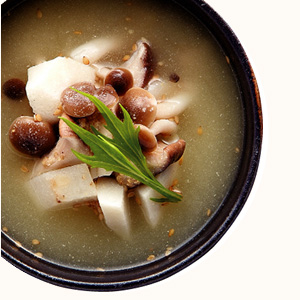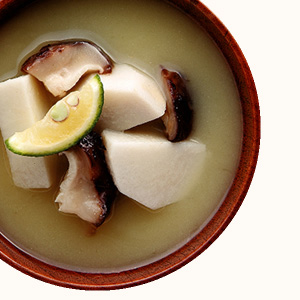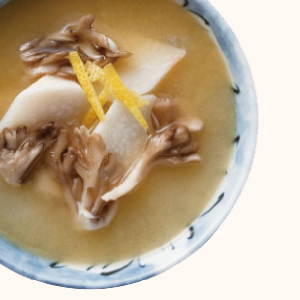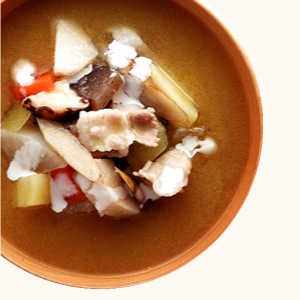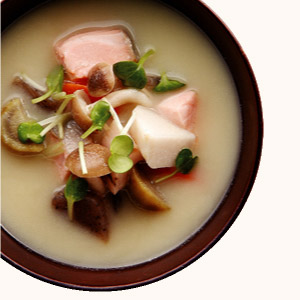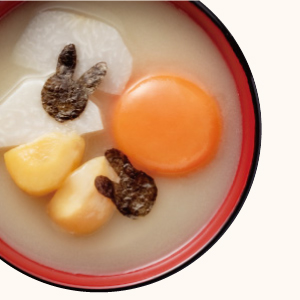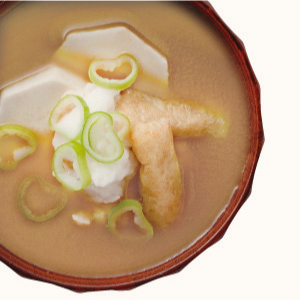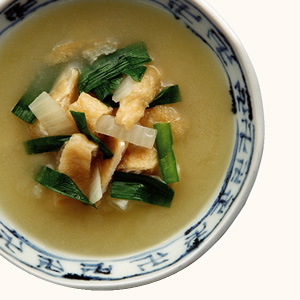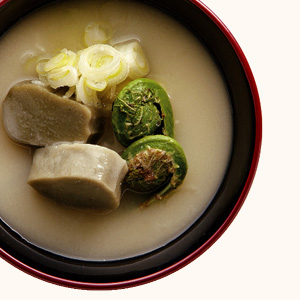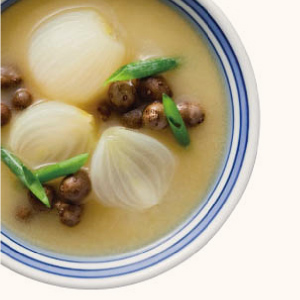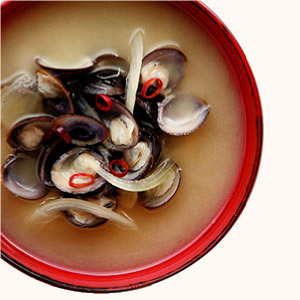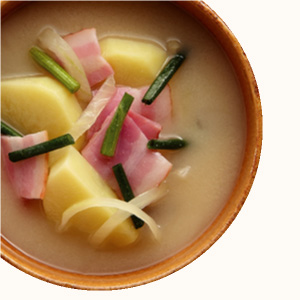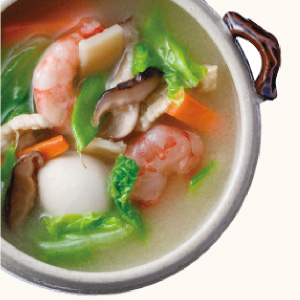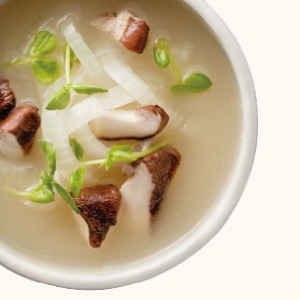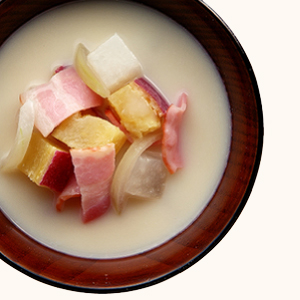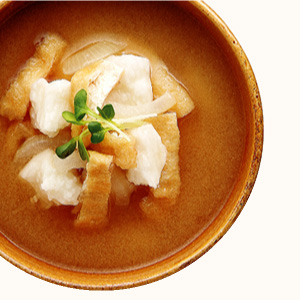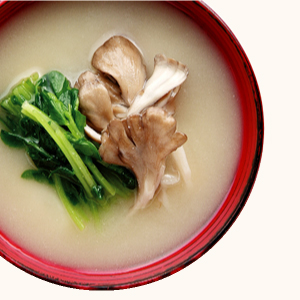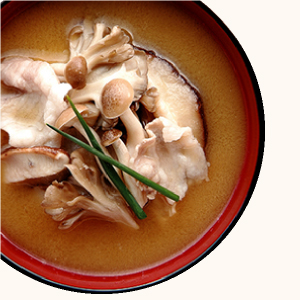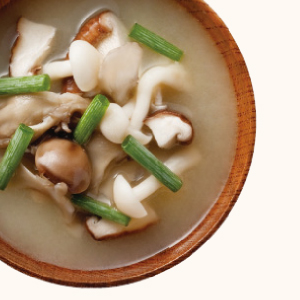
Taro Miso Soup
About Taros

Taros have a characteristic slimy texture. The substance for this texture is water-soluble dietary fiber. Taros are friendly to the body and full of nutrition. They are super vegetables, and people want to eat them very much in winter. Miso soups of taros warms you up from the inside. Since taros have very low calories among the tubers and roots, they are also good for those on diet.
Taro Miso Soup Recipes
Miso Soups with Plenty of Vegetables
Miso Soups of Taros and Vegetables in Season
Slime and Nutrition of Taros
The slime of taros consists of mucin and galactan, which are both water-soluble dietary fiber. Mucin has the effect of improving the functions of the stomach by protecting its mucous membrane, and galactan is effective in preventing a cold.
Since taros are also effective in improving anemia, poor blood circulation and swelling, they are popular among those who are conscious of their health.
How to Peel Taros
Peeling wet taros is difficult and makes your hands itchy. Dry them after washing. It makes them less slimy and does not cause itchiness.
You can peel taros easily if you cool them in cold water after boiling for about 10 minutes or if you heat them wrapped with a plastic wrap in a microwave oven for about 3 minutes.
Onion Miso Soup
About Onions

Onions can be obtained year-round in Japan and be stored at room temperatures for a long time. They are thus indispensable not only for miso soup but also for various homemade dishes. They add a mild sweetness to miso soup.
Since onions can be cooked with various ingredients, such as other vegetables, Vienna sausage and shellfish, you can easily make tasty miso soups by using them together with any foods found in your refrigerator. They are a good ingredient when you want to add a mild sweetness to miso soup.
If you simmer onions until they become pulpy, you get a miso soup full of sweetness. If you combine onions with milk, you get a unique and tasty miso soup.
Onion Miso Soup Recipes
Feast Miso Soups with an Arrangement
Try Something New! Uncommon Ingredients and Tastes
Flavor of Onions and the Cause of Tears
The source of the distinctive flavor and pungency of onions is diallyl sulfide. It has the effect of making your blood flow smoothly and is also the cause of bringing tears to your eyes. To prevent tears, cool onions in a refrigerator for about an hour or use a sharp knife to cut them.
Since this substance is water-soluble, it seeps out of onions if soaked in water for a long time. Avoid soaking onions in water too long.
Storing Onions
Onions are vulnerable to moisture. To keep their taste, place them in a net or stockings and hang in an airy place with no direct sunlight.
If it is difficult, wrap each onion with newspaper and store in a basket or cardboard box. Newspaper absorbs moisture and can protect onions from moisture.
Maitake Miso Soup
About Maitake

You can obtain maitake mushrooms easily at supermarkets year-round. They have low calories but contain plenty of vitamin Bs and dietary fiber. Since they are full of dietary fiber, they are suitable ingredients for those conscious of health and beauty and those on diet. You can easily make a healthy, nourishing soup by using them in miso soup.
Maitake Miso Soup Recipes
Maitake Miso Soups with Popular Ingredients
Preparation
The preparation of maitake is simple and you can use it quickly for cooking.
Artificially-grown maitake does not require washing, and almost all the maitake mushrooms available at supermarkets are artificially grown.
If the maitake you obtained has dirt, lightly wipe the dirt off it with a wet paper towel.
While you can eat maitake from the top to the base, cut the base off if it is hard. Then, break the maitake into proper sizes with hands before cooking.
How to Store Maitake
Freezing maitake increases its umami (good taste) and flavor.
Before storing maitake in a freezer, cut the base off, break into smaller clusters and place in a plastic bag. You can store maitake in a freezer for 3 weeks to a month.
If you store maitake in a refrigerator, place it in a vegetable compartment and use it up in 3 ~ 4 days.
If you store maitake together with other mushrooms, you can easily prepare your own mixed mushrooms.


